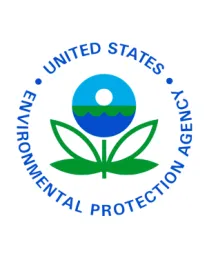On July 7, 2017, the United States Court of Appeals for the District of Columbia Circuit (the D.C. Circuit) vacated portions of the U.S. Environmental Protection Agency's (EPA) 2015 rule on the Definition of Solid Waste (the 2015 Rule). See American Petroleum Institute v. EPA, No. 09-1038 (D.C. Cir. 2017) (API Opinion). Both industry and environmental groups challenged the 2015 Rule. The 2015 Rule revised a Definition of Solid Waste Rule promulgated by EPA in 2008 (the 2008 Rule). See 80 Fed. Reg. 1694 (Jan. 13, 2015) (the 2015 Rule) and 73 Fed. Reg. 64668 (Oct. 30, 2008) (the 2008 Rule).
2008 Rule
The 2008 Rule excluded hazardous secondary materials from the definition of solid waste in two circumstances: (1) if the company that generated the materials controlled the recycling of those materials, a.k.a., the "Generator-Controlled Exclusion;" and (2) if the generator transferred the materials to an off-site recycler it had audited (i.e., taken "reasonable efforts") to ensure compliance with proper recycling practices, a.k.a., the "Transfer-Based Exclusion." 2008 Rule at 64670. To qualify for either exclusion, secondary materials had to be recycled "legitimately," a term EPA defined by reference to certain "legitimacy factors," which distinguished "true" recycling from "sham" recycling, in which companies claim to reuse materials they in fact discard as waste. Id. at 64675.
2015 Rule
The 2015 Rule revised the 2008 Rule in several ways, relevant to this case. See KEAG Bulletin No. 2014‑98, dated December 17, 2014. The 2015 Rule revised the definition of "legitimate recycling" and expanded the scope of the legitimacy factors to cover all recycling. 2015 Rule at 1719. Second, the 2015 Rule replaces the Transfer-Based Exclusion with the "Verified Recycler Exclusion," a new standard governing when transferred materials qualify as solid waste. Third, the 2015 Rule deferred a decision on whether to add conditions to 32 previously promulgated exclusions from the definition of solid waste that were pre‑2008 Rule exclusions. Finally, the 2015 Rule established that spent catalysts, which were ineligible for exclusions under the 2008 Rule, could qualify for the exemption under the Verified Recycler Exclusion. API Opinion at 5.
Legitimacy Factors
Industry Petitioners challenged EPA's planned means to implement the legitimacy test. They complained that mandating two of the four factors across all recycling, results in EPA unlawfully regulating non‑discarded materials. Id. at 8. To satisfy the legitimacy test for recycling of a particular material, firms must prevail on all four factors. First, the hazardous secondary material must provide a useful contribution to the recycling process. Second, the recycling process must produce a valuable product or intermediate. Third, the persons controlling the secondary material must manage the hazardous secondary material as a valuable commodity. And fourth, the product of the recycling process must be comparable to a legitimate product or intermediate. Industry Petitioners challenged Factors 3 and 4. Id. at 7. With respect to Factor 3, the court found that it was reasonable for EPA to impose a containment requirement, so long as it is such that an inference of "sham" or illegitimacy would logically flow from a firm's noncompliance. Id. at 9.
The court's analysis of Factor 4 was more involved. EPA described this factor as an effort to prevent recyclers from loading products with hazardous secondary materials that provide no recognizable benefit to the product and are simply "along for the ride." Id. at 9. Thus, EPA was concerned that reported recyclers might incorporate hazardous constituents in the final product when they were not needed to make the product effective as a way to avoid proper disposal of that material, which would be sham recycling. Factor 4, however, is complex. It sets up two tracts: one for covering products for which there is an analog of undoubted recycling legitimacy, and the other addressing products with no such analog. Id. at 10. EPA recognized, however, that the criteria set forth under these two tracts did not draw a satisfactory line between genuine and sham recycling. Consequently, the Agency offered a rather complicated exception aimed at preventing products from being labeled as sham when they in fact posed no "significant human health or environmental risk." Id. After an exhaustive analysis, the court found that Factor 4's complex provision falls short of this aim. The court determined that Factor 4 imposes "tasks tangential to disposal . . . and thus tangential to EPA's authority . . . even when EPA has offered little reason to doubt a product's legitimacy." Id. Consequently, the court vacated Factor 4 insofar as it applies to all hazardous secondary materials via 40 C.F.R. § 261.2(g). EPA had also written legitimacy factors into specific exclusions, and Petitioners did not challenge Factor 4 as it applied in those individual exclusions. Id. at 20.
Verified Recycler Exclusion
Industry Petitioners also challenged the Verified Recycler Exclusion, arguing that EPA had no reason in its 2015 revisions to tighten the conditions of its predecessor provision, the Transfer-Based Exclusion. Id. at 20. The Verified Recycler Exclusion is similar to its predecessor but makes two significant changes. First, the new exclusion requires the generator to meet special "emergency preparedness" standards. Id. at 22. For example, the generator's facility must be maintained and operated to minimize the possibility of fire, explosion, or any unplanned release of hazardous secondary materials that could threaten human health or the environment. Id. Second, the Verified Recycler Exclusion eliminates the "reasonable efforts" option afforded by the Transfer-Based Exclusion and requires that generators send their secondary materials to reclaimers that either have a RCRA permit or a RCRA variance, which in effect requires EPA or state-level approval for a firm to operate the third‑party reclamation facility. After a thorough analysis, the court vacated the Verified Recycler Exclusion except for its emergency preparedness provisions and its expanded containment requirement. Id. at 42. In so doing, the court reinstated the Transfer-Based Exclusion from the 2008 Rule. By vacating the Verified Recycler Exclusion, however, the court vacated the hazardous waste exclusion for spent catalysts contained in the Verified Recycler Exclusion. Id. at 36.
Environmental Petitioners challenged EPA's decision to defer rulemaking on applying containment and notification conditions to pre-2008 Rule exclusions. The court found that it lacked jurisdiction to review the Petitioners' claim. Id. at 40.




 />i
/>i


